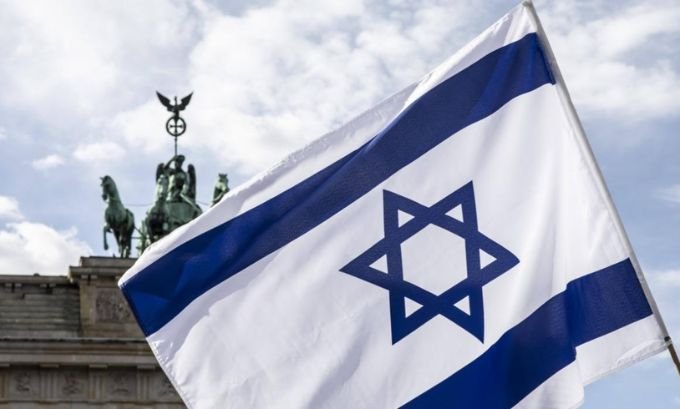The establishment of the State of Israel in 1948 was the result of a decades-long political movement, international diplomacy, and armed conflict. In short, Israel was established after the British mandate over Palestine ended, and Jewish leaders declared independence, a move which was immediately followed by a war with neighboring Arab states. This article explores the key events and figures that shaped this pivotal moment in history.
Table of Contents
The Origins of a State: How Israel Was Established
The story of how Israel was established is complex, involving deep historical roots and a series of transformative 20th-century events. It begins with a political ideology, is propelled by world wars and imperial promises, and culminates in a declaration of statehood and subsequent conflict.
The Rise of Modern Zionism
Modern political Zionism was the driving force behind the creation of Israel. It emerged in the late 19th century as a response to widespread antisemitism in Europe. The movement’s goal was to establish a national homeland for the Jewish people in their ancestral land.
Theodor Herzl, an Austro-Hungarian journalist, is considered the father of modern Zionism. After witnessing the Dreyfus Affair in France, he became convinced that Jews would never be safe without their own state. In his 1896 book, Der Judenstaat (The Jewish State), he laid out a practical vision for creating this nation. A year later, he organized the First Zionist Congress, which formally declared the goal of establishing “a home for the Jewish people in Palestine secured by public law.” This congress created organizations to raise funds, purchase land in Palestine, and lobby international powers for support.
Britain’s Imperial Promise: The Balfour Declaration
A major turning point came during World War I. In 1917, British Foreign Secretary Arthur Balfour issued the Balfour Declaration. This public letter declared that the British government viewed “with favour the establishment in Palestine of a national home for the Jewish people.”
Why did Britain make this promise?
- Imperial Strategy: Britain wanted to secure a friendly ally controlling the Suez Canal and the land bridge between Asia and Africa.
- Wartime Aims: It hoped to rally Jewish support for the Allied war effort, particularly in the United States and Russia.
- Political Lobbying: Zionist leaders, notably Chaim Weizmann, had effectively lobbied high-ranking British officials.
This declaration was a monumental victory for the Zionist movement, giving it the backing of a major world power.
A Personal Perspective: Understanding the Human Element
Studying history often feels distant, like a collection of dates and facts. But when I traveled through the region and spoke with descendants of families from both sides of the 1948 conflict, the human cost became tangible. I met an elderly Palestinian man in a refugee camp in Jordan who held the key to a house in Jaffa that his family fled in 1948. He spoke not of politics, but of the smell of orange blossoms and the life they left behind.
In Tel Aviv, I listened to the story of a woman whose grandparents, Holocaust survivors, arrived in British Mandate Palestine with nothing but the clothes on their backs. For them, the nascent state was not a political project but a desperate search for safety and a place to call home. These personal histories illustrate that behind the political movements and military strategies were millions of ordinary people whose lives were irrevocably changed. The establishment of Israel was a source of deliverance and hope for one people, and the cause of the Palestinian Nakba, or “catastrophe,” for another.

From Mandate to Partition: Setting the Stage for Conflict
After World War I, the League of Nations Mandate for Palestine formally placed the territory under British administration. Crucially, the mandate’s text incorporated the Balfour Declaration, legally obligating Britain to facilitate the creation of a Jewish national home.
Under British rule, the Jewish community in Palestine grew significantly through immigration. It developed its own political institutions, schools, and even a paramilitary force, the Haganah, which would later form the core of the Israel Defense Forces (IDF). Meanwhile, the Arab population grew increasingly alarmed, fearing their country was being given away. This tension erupted into violence, most notably the Arab revolt of 1936-1939.
Exhausted by World War II and unable to manage the escalating conflict, Britain turned the problem over to the newly formed United Nations in 1947.
The UN Partition Plan and its Aftermath
The UN’s proposed solution was the United Nations Partition Plan (1947). It recommended dividing Palestine into two independent states: one Jewish and one Arab, with Jerusalem administered as an international city. At the time, Jews comprised about one-third of the population and owned approximately 7% of the land, but the plan allocated them 56% of the territory.
The Jewish leadership, led by David Ben-Gurion, accepted the plan as a pragmatic step toward statehood. The Arab states and the Palestinian leadership rejected it outright, viewing it as an unjust division of their land. Immediately following the UN vote, a civil war broke out in Palestine between Jewish and Arab forces.
The 1948 War and the Declaration of Independence
As British forces prepared to withdraw, the fighting intensified. On May 14, 1948, the day before the British mandate officially ended, David Ben-Gurion declared the establishment of the State of Israel in Tel Aviv. He became its first Prime Minister.
The very next day, armies from Egypt, Jordan, Syria, Iraq, and Lebanon invaded, launching the 1948 Arab-Israeli War.
Key Strengths of the Zionist Forces
- Unified Command: The Haganah provided a centralized and organized military structure.
- Experienced Fighters: Many Jewish soldiers had gained combat experience fighting for the British in World War II.
- Clear Objective: They were fighting for the survival of their newly declared state.
- External Support: A deal with Czechoslovakia supplied crucial weapons when other nations imposed an arms embargo.
Challenges for the Arab Armies
- Divided Command: Each national army operated under its own leadership with competing political goals.
- Unclear Objectives: Goals varied from liberating Palestine to annexing territory for themselves.
- Internal Rivalries: Mistrust between Arab leaders hampered military coordination.
By the time armistice agreements were signed in 1949, Israel controlled 78% of what had been Mandatory Palestine. The war had a devastating impact on the Palestinian population. Over 700,000 Palestinians—more than half the Arab population—fled or were expelled from their homes, an event known as the Nakba. They became refugees in neighboring countries, and their descendants remain so to this day.
Comparison of Key Historical Plans for Palestine
| Plan | Year | Proposed by | Outcome for Jewish State | Outcome for Arab State | Result |
|---|---|---|---|---|---|
| Peel Commission | 1937 | Britain | A small state in about 20% of Palestine | A larger state joined with Transjordan | Rejected by Arab leadership, plan abandoned. |
| UN Partition Plan | 1947 | United Nations | 56% of Palestinian territory | 43% of Palestinian territory (Jerusalem international) | Accepted by Jewish leaders, rejected by Arab leaders. Led to civil war. |
| 1949 Armistice Lines | 1949 | Post-War Reality | Control of 78% of Palestine | West Bank annexed by Jordan, Gaza controlled by Egypt | Became Israel’s de facto borders until 1967. No Palestinian state. |

The Aftermath and Lasting Impact
The 1948 war did not end the conflict. No formal peace treaties were signed, and tensions remained high. In the years that followed, Israel focused on absorbing hundreds of thousands of Jewish immigrants, including Holocaust survivors and Jews fleeing Arab countries.
The geopolitical map was redrawn again following the Six-Day War (1967). In a preemptive strike against Egypt, Syria, and Jordan, Israel captured the Sinai Peninsula and Gaza Strip from Egypt, the West Bank (including East Jerusalem) from Jordan, and the Golan Heights from Syria. This victory established Israel as the region’s dominant military power but also placed it in control of millions of Palestinians in the occupied territories, setting the stage for the ongoing conflict we see today.
Frequently Asked Questions (FAQ)
1. Who founded Israel?
While many people were involved, key figures include Theodor Herzl, who founded the modern Zionist movement, and David Ben-Gurion, who declared the state’s independence and became its first prime minister.
2. Why was Israel established in Palestine?
The Zionist movement chose Palestine because of its historical and religious significance as the ancestral homeland of the Jewish people, known in Jewish tradition as Eretz Israel (the Land of Israel).
3. What was the Balfour Declaration?
The Balfour Declaration was a 1917 letter from the British government supporting the establishment of a “national home for the Jewish people” in Palestine. It was a critical step in gaining international legitimacy for the Zionist project.
4. What is the Palestinian Nakba?
The Nakba, meaning “catastrophe” in Arabic, refers to the mass displacement of over 700,000 Palestinians who fled or were expelled from their homes during the 1948 Arab-Israeli War.
5. What was the UN’s role in creating Israel?
In 1947, the United Nations proposed a Partition Plan to divide Palestine into separate Jewish and Arab states. Though the plan was never fully implemented due to the ensuing war, the UN vote provided the political justification for Israel’s declaration of independence.
6. Did the United States create Israel?
No. The establishment of Israel was driven by the Zionist movement. However, the United States was one of the first countries to recognize the new state in 1948, granting it crucial international legitimacy.
7. How did the 1948 Arab-Israeli War start?
The war began the day after Israel declared independence. Armies from five neighboring Arab nations invaded with the stated goal of preventing the establishment of a Jewish state and assisting Palestinian Arabs.
Conclusion
The establishment of Israel was a complex and multifaceted process, rooted in the 19th-century Zionist movement and realized through early 20th-century diplomacy and war. Key milestones like the Balfour Declaration and the UN Partition Plan provided the political framework, while the leadership of figures like Theodor Herzl and David Ben-Gurion provided the vision and drive. The 1948 Arab-Israeli War ultimately forged the new state’s borders, but it also created the Palestinian refugee crisis, a core issue in the conflict that endures to this day. Understanding these interconnected events is essential to grasping the origins of one of the world’s most enduring conflicts.
To learn more about the modern dynamics of this region, explore our resources on the consequences of the Six-Day War.
To explore global perspectives on heritage and identity through cultural products, visit Tokyo Mart curated selections
About the Author
Dr. Alistair Finch is a historian and political analyst specializing in 20th-century Middle Eastern history. With over 15 years of field research experience in the region, Dr. Finch holds a Ph.D. in Modern History from Oxford University. His work focuses on deconstructing complex historical narratives to provide clear, fact-based analysis for a general audience. He has published several peer-reviewed articles on the British Mandate period and the origins of the Israeli-Palestinian conflict.


